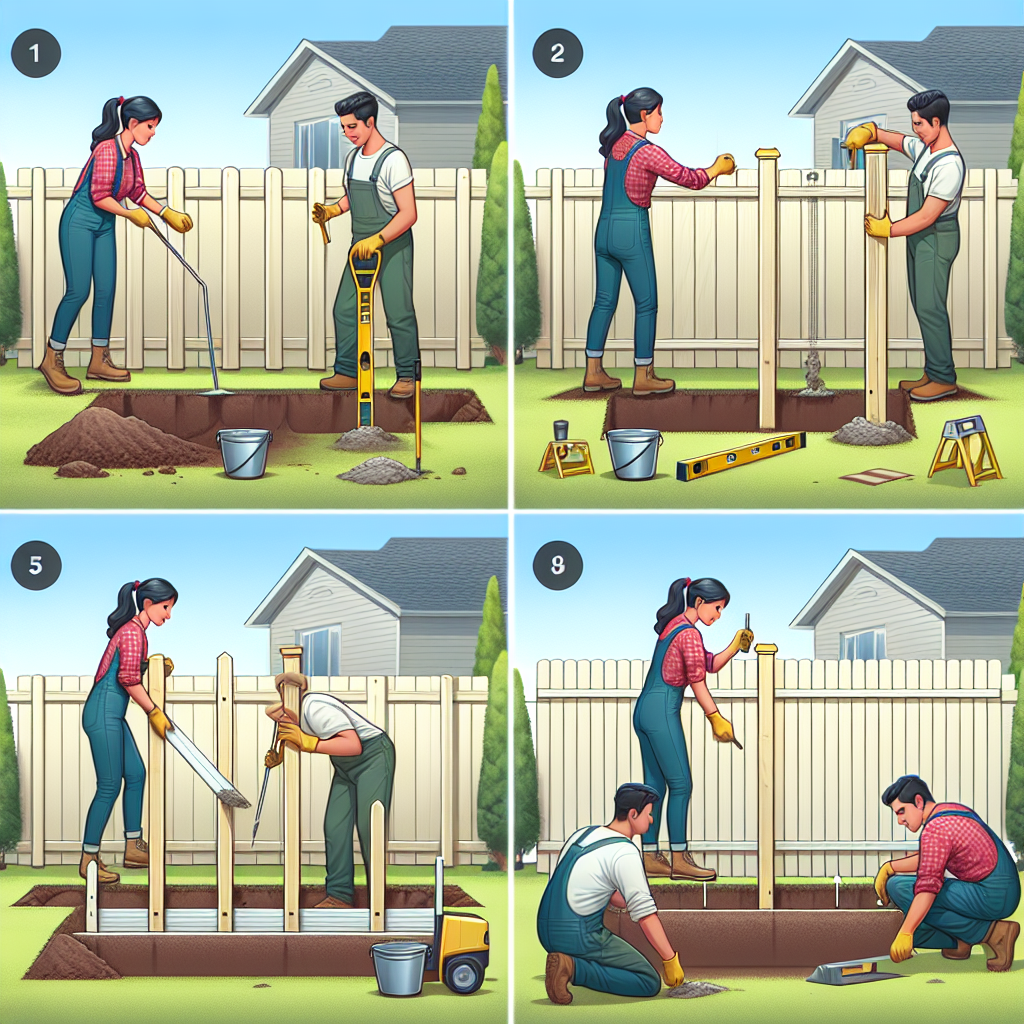
How to install a fence
How to Install a Fence: A Comprehensive Guide
Installing a fence can be a rewarding DIY project that enhances your property's aesthetics, provides privacy, and offers security. Whether you are looking to create a boundary for your yard or add some decorative elements, knowing how to install a fence properly is crucial. This guide will take you through the process step-by-step, ensuring that you have all the information you need to complete the task successfully.
Understanding the Purpose of Your Fence
Before diving into the installation process, it’s essential to define why you’re installing a fence. Different purposes may require different types of fences. Here are a few common reasons for installing a fence:
- Privacy: A tall, solid fence can give you the seclusion you desire.
- Security: Fences can deter intruders and keep pets and children safely contained.
- Aesthetics: Decorative fences can enhance the look of your property.
- Boundary: Fences serve to clearly outline property lines.
Choosing the Right Type of Fence
Once you've established the purpose of your fence, the next step is to decide on the type of fence that suits your needs. Here are a few popular options:
- Wood Fences: These provide a classic look and can be customized easily, but they require maintenance.
- Vinyl Fences: Low-maintenance and durable, vinyl fences come in various styles and colors.
- Chain Link Fences: Economical and functional, chain link fences are great for security.
- Aluminum Fences: These offer a sleek look and are resistant to rust, making them a long-lasting choice.
Planning Your Fence Installation
Planning is crucial to ensure a smooth installation process. Here are some steps to consider:
- Check Local Regulations: Before installing a fence, check local zoning laws, as there may be specific regulations regarding fence height, style, and placement.
- Measure Your Yard: Determine the total length of the fence required and identify corners, gates, and other key features.
- Mark the Layout: Use stakes and string to outline the fence's location and ensure it aligns with your property lines.
Gathering Materials and Tools
Having the appropriate materials and tools on hand before beginning the installation is essential. Here’s what you’ll need:
- Materials: Choose your fence panels, posts, concrete for securing posts, nails or screws, and any additional features like gates.
- Tools: Typically, you will need a post hole digger, level, measuring tape, hammer, saw, and a power drill.
Preparing the Ground
Before you can install your fence, you must prepare the area where it will go. This includes:
- Clearing the Area: Remove any weeds, debris, or obstruction along the fence line.
- Checking for Underground Utilities: Call local utility companies or use a utility locator service to avoid damaging underground lines.
Installing Fence Posts
The fence posts are the backbone of your fence. Follow these steps to install them properly:
- Dig Post Holes: Use a post hole digger to create holes that are at least one-third of the post's length. A depth of 2-3 feet is ideal for stability.
- Set the Posts: Place the fence posts in the holes, ensuring they are level. Use braces to hold the posts in position temporarily.
- Secure with Concrete: Mix and pour concrete around each post for stability. Allow the concrete to cure for 24 hours before proceeding.
Attaching the Fencing Panels
Once the fence posts are set, it’s time to attach your fencing panels. Here's how to do it:
- Measure and Cut: Measure the panels to fit the space between the posts, cutting them as necessary.
- Attach Panels: Secure the panels to the posts using nails or screws, making sure they are level at each step.
- Install Gates: If you have purchased gates, install them according to the manufacturer's directions, ensuring they swing freely and latch securely.
Finishing Touches
After the panels are attached, take the time to add any finishing touches that will enhance the look and longevity of your fence:
- Sealing and Staining: If you installed a wood fence, consider sealing or staining it to protect against the elements.
- Trimming Vegetation: Ensure that grass and plants do not obstruct the fence or posts.
- Regular Maintenance: Inspect your fence periodically for damage, rotting, or rust, particularly after any major weather events.
Conclusion
Knowing how to install a fence can empower you to enhance your property and create a space that's inviting and secure. From understanding the purpose of the fence to choosing the right materials and tools, each step is crucial for a successful installation. Remember, proper planning and execution can save you time, money, and hassle. Whether you choose to go for a traditional wood fence or a low-maintenance vinyl option, enjoy the process and the benefits that come with your new fence!
“The best fences make good neighbors.” - Robert Frost
Additional Resources
If you're interested in learning more, consider checking out the following resources:
- DIY Fence Installation Video Tutorials
- Fence Material Suppliers Near You
- Community Forums for Fence Installation
By Guest, Published on August 26th, 2024